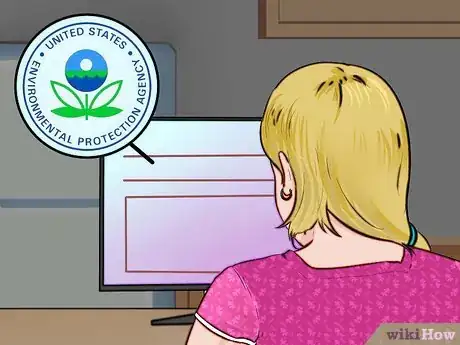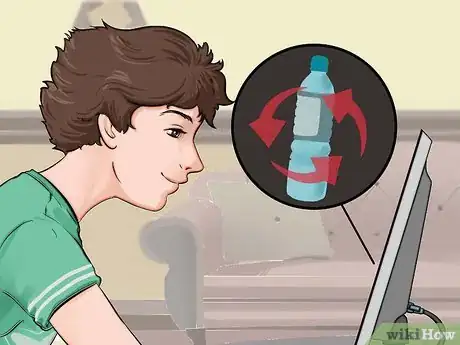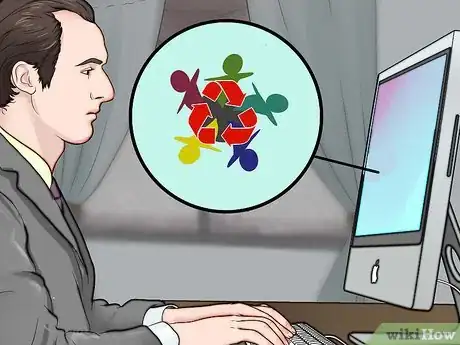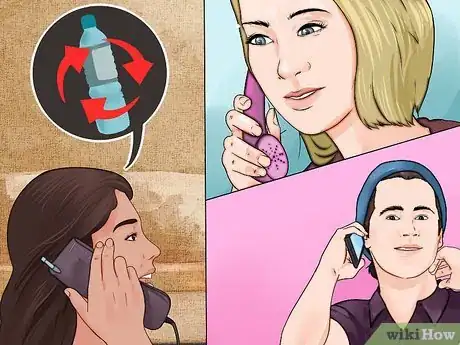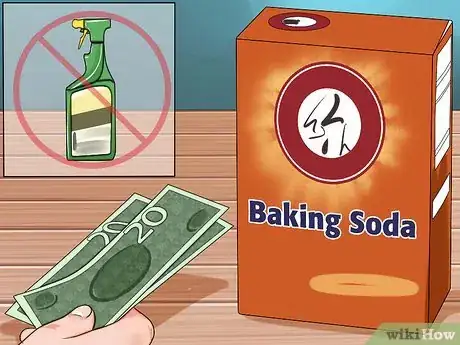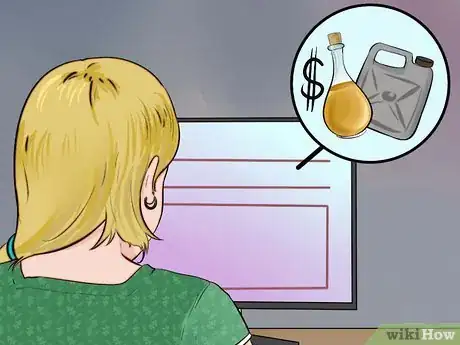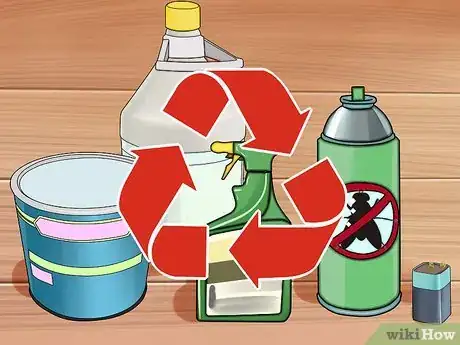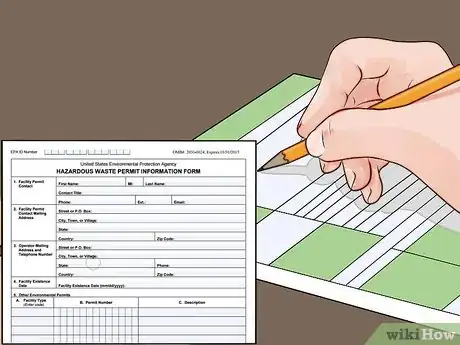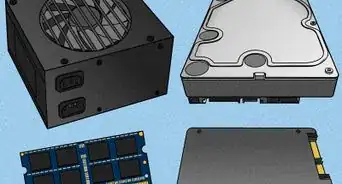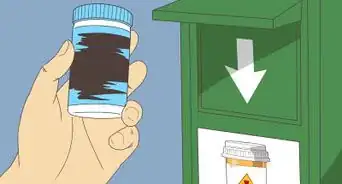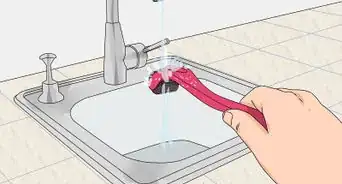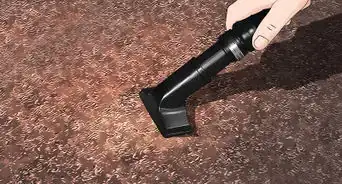This article was co-authored by Kathryn Kellogg. Kathryn Kellogg is the founder of goingzerowaste.com, a lifestyle website dedicated to breaking eco-friendly living down into a simple step-by-step process with lots of positivity and love. She's the author of 101 Ways to Go Zero Waste and spokesperson for plastic-free living for National Geographic.
This article has been viewed 346,579 times.
Knowing how to dispose of hazardous waste is imperative for citizens and business owners alike. Hazardous waste can be harmful to humans, animals and the environment. They can be found in the form of solids, liquids, gases or sludge. Many laws have made disposing hazardous waste an easy process. There is no excuse to pollute.
Steps
Understanding Hazardous Waste
-
1Understand hazardous waste. Hazardous waste cannot be disposed like normal trash in landfills. Instead it must be disposed through the proper networks to prevent human and environmental harm.[1] Look at the four characteristics of hazardous waste:
- Ignitability means that the waste can easily catch on fire. It is considered flammable if the flash point is less than 140 degrees Fahrenheit.
- Corrosive wastes are acids/bases that are capable of corroding metal containers.
- Reactive wastes are unstable under normal conditions. They can cause explosions, toxic fumes, gases or vapors when heated.
- Toxic types of wastes are potentially fatal or harmful when absorbed or ingested. They can pollute groundwater if not disposed of properly.
-
2Be responsible with your waste. Responsibility in disposing these types of wastes isn’t just for your carbon footprint. Many counties and states attach legal responsibility towards disposing hazardous waste.
- Companies who don’t adhere to the laws are subject to fines and other legal action.
Advertisement -
3Research your local laws. Many counties across the U.S. have specific protocol for disposing hazardous waste. Each county can have different steps and regulations for disposing hazardous waste. The actual disposal of hazardous waste on the local level is enacted by the Environmental Protection Agency (EPA).
-
4Recognize everyday hazardous products. It is common to come into contact with hazardous waste without ever knowing it. Take a look at the following list of common products that shouldn’t be thrown away normally:
- Automotive products. This includes antifreeze, fluids, motor oils, and gasoline.
- Batteries
- Fluorescent light bulbs. Many of the older models contain mercury.
- Household cleaners. This includes ammonia, drain cleaner, deicer (e.g., calcium chloride), and rust remover.
- Paint products.[2]
- Garden chemicals.
- Swimming pool chemicals.[3]
Disposing of Household Hazardous Waste
-
1Recognize common household hazardous wastes. Hazardous waste can find its way into most household. The most common hazardous wastes you’ll come into contact with at home are:
- Harsh chemical cleaners
- Paints/thinners
- Antifreeze
- Weed killers
- Insecticide/pesticide
-
2Use a home pickup service. Many communities have set up an easy to follow home pickup system. Never mix hazardous waste with normal trash. Your community will benefit from separating the two. Unfortunately pickup systems aren’t mandated on the federal level, so there is a chance you won’t have access to these services. Many times this service will charge a fee.
- Check the waste management's location tracker to see if your address is eligible.[4]
- There are various different types of receptacles that can be used for different wastes. For instance you can request special containers for used batteries, syringes, and extra durable bags for heavier waste.
-
3Locate a drop-off facility. For those unable to use a pick up service, dropping off your waste to a facility is another option. Most local government websites can direct you to the appropriate contacts to help dispose of hazardous waste. There is usually a day of the week where facilities accept waste like: paint products, motor oil, and other common household wastes.[5]
-
4Recycle hazardous waste. You might be able to recycle some of your hazardous waste. Many sites will accept materials like batteries and used cellphones to be recycled on a daily basis. Be on the lookout for other recycling opportunities. Many schools and community groups will accept leftover paint supplies, and give them to the people who can still use them.[6]
- Check with your auto garage if they’d accept used or spare fluids from your car. Some will even accept antifreeze and recycle it.[7]
-
5Request by-mail-kits. Some organizations, like waste management, will send you a mail-in kit for your waste. After you confirm your location, you’ll fill out a form online. In this form you’ll indicate certain information about the waste and your address. You’ll receive a recycling kit that is postage paid. The kits will vary depending on what information about the waste you included on your form.
-
6Organize a community drop-off. Depending on how established waste management is in your community, they will come out and work with you. You can organize a regular hazardous waste drop-off if there isn’t already one in your community. Contact waste management for information about setting up or attending a hazardous waste drop-off.[8]
- These can be a recurring event or a one time drop-off.
- You should always consult with waste management about a potential hazardous waste. It is not recommended to dispose hazardous waste manually.
-
7Use non-hazardous products. As a general rule, only buy what you need and consider alternatives when available. Instead of using a chemical drain cleaner, use strainers to catch the debris that may clog your pipes. Flush your drains weekly with hot water or warm vinegar.
- Use baking soda and a steel wool pad instead of using intense counter top cleaners.
- Consider using non-aerosol products like those with pump sprays. Instead of using an aerosol air-cleaner, keep an open box of baking soda in a room or create potpourri out of scrap orange peels.[9]
Disposing of Commercial Hazardous Waste
-
1Hire an expert consultant. Companies can reap the benefits from groups like waste management. Experts from waste management can be scheduled to appear at your business to review your hazardous waste and give you their opinion. They can show where you fall on the EPA’s category assessment of how much waste small businesses generate:
- Conditionally exempt small quantity generator (CESQG). This means that you are exempt from hazardous waste management regulations. You must generate less than 220 pounds a month to fit this category.
- Small quantity generators (SQG). Your business is deemed SQG if your establishment generates between 220 and 2,200 pounds a month. This classification must comply with EPA requirements for managing hazardous waste.
- Large quantity generators (LQG). The EPA considers any business that generates 2,200 pounds or more of hazardous waste a month to be LQG. This classification must adhere to the strictest rules deemed by the EPA.[10]
-
2Join WasteWise. Any type of business, non-profit organization, or government office is eligible to join the EPA’s WasteWise program. Participants can utilize the free technical assistance in disposing and consultation about hazardous waste. There are even opportunities for WasteWise to assist with your business’ sustainability and environmental impact.
- There are opportunities in networking and public recognition for your companies environmental efforts.
-
3Consider reduction as a disposal tactic. Many industries are looking for ways to reduce the amount of hazardous chemicals they use, which in turn reduces the amount of hazardous waste they generate. The Environmental Protection Agency lists various approaches to do this for businesses:
- Lean manufacturing is a reduction tactic that emphasizes eliminating wastes that don't add value.
- Energy recovery is enacted through gasification. Gasification converts materials containing carbon into synthetic gas. This type of gas can be used as fuel to generate electricity and other features.
- Environmental Management Systems (EMS) is a system for assessing a company's environmental footprint.
- Green chemistry is a designing outlook that strives to create products and chemicals that reduce or remove hazardous substances.
-
4Reduce and recycle hazardous materials. Many items that can become a hazardous waste problem can be recycled, or in some cases, reclaimed. This is a process that recovers what is left of an usable product. Some reclamation processes recover acetone from spent solvents and lead from metals.
- Zinc can be gathered from smelting furnaces.
- Used oil, hydraulic fluids, refrigerator compressors and more can be recovered from cars and fridges.
- Batteries can also be recycled.
-
5Look into land disposal. Land disposal of hazardous waste contains the waste in a landfill, waste pile, injection well or other land based disposal area. These areas fall under regulation to help protect the families around them as well as reduce environmental impact.[11]
-
6Keep up to date with your permits. The Resource Conservation and Recovery Act (RCRA) is a permitting program in place to ensure that specific requirements are followed in safe treatment, storage, and disposal of hazardous waste. Permits are issued by authorized states or by EPA regional offices. Electronic permits are also available.[12]
Community Q&A
-
QuestionDo I have to pay for disposing hazardous waste?
 Community AnswerYes, but most of the time your community/city includes it in your trash rate. Contact your city and ask them.
Community AnswerYes, but most of the time your community/city includes it in your trash rate. Contact your city and ask them. -
QuestionHow do I dispose of the vomit from a person?
 Community AnswerVomit is not considered hazardous waste. You can flush it down a toilet or just throw it away in the garbage.
Community AnswerVomit is not considered hazardous waste. You can flush it down a toilet or just throw it away in the garbage. -
QuestionDo all CFL and fluorescent light bulbs contain mercury?
 Community AnswerNo. Only some of the old models contain mercury. The latest models include fluorescent powder, which is a non-hazardous white powder.
Community AnswerNo. Only some of the old models contain mercury. The latest models include fluorescent powder, which is a non-hazardous white powder.
Warnings
- Never mix potentially hazardous with other household wastes.⧼thumbs_response⧽
References
- ↑ Kathryn Kellogg. Sustainability Specialist. Expert Interview. 28 June 2019.
- ↑ Kathryn Kellogg. Sustainability Specialist. Expert Interview. 28 June 2019.
- ↑ http://www.wm.com/enterprise/municipalities/residential-solutions/household-hazardous-waste.jsp
- ↑ http://www.wm.com/enterprise/municipalities/residential-solutions/household-hazardous-waste.jsp
- ↑ Kathryn Kellogg. Sustainability Specialist. Expert Interview. 28 June 2019.
- ↑ http://www.dec.ny.gov/docs/materials_minerals_pdf/hhwma.pdf
- ↑ http://www.dec.ny.gov/docs/materials_minerals_pdf/hhwma.pdf
- ↑ http://www.wm.com/enterprise/municipalities/residential-solutions/household-hazardous-waste.jsp
- ↑ http://www.dec.ny.gov/docs/materials_minerals_pdf/hhwma.pdf
About This Article
To dispose of hazardous waste, start by keeping the waste separate from your regular trash. Then, check online to see if there is a community hazardous-waste pickup system you can use to have the waste picked up from your home. If there's not, look up a local drop-off facility and bring your hazardous waste there. You may even be able to find a local program that will recycle some of your hazardous waste. To learn how to dispose of large amounts of commercial hazardous waste, scroll down.



